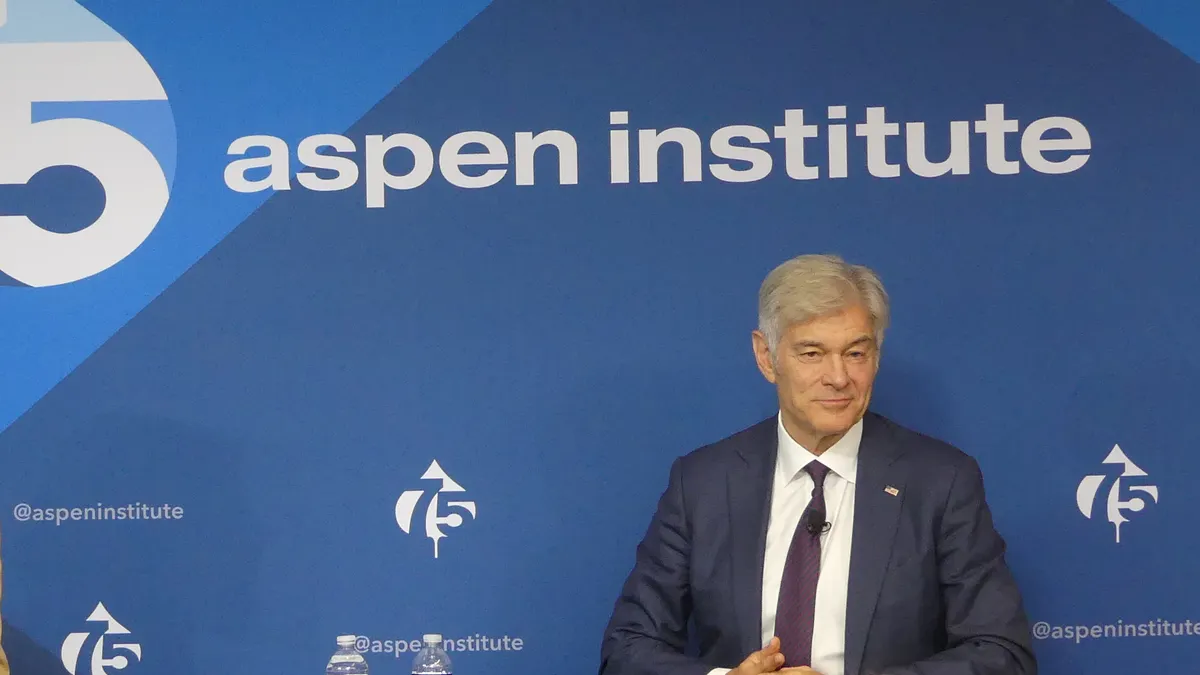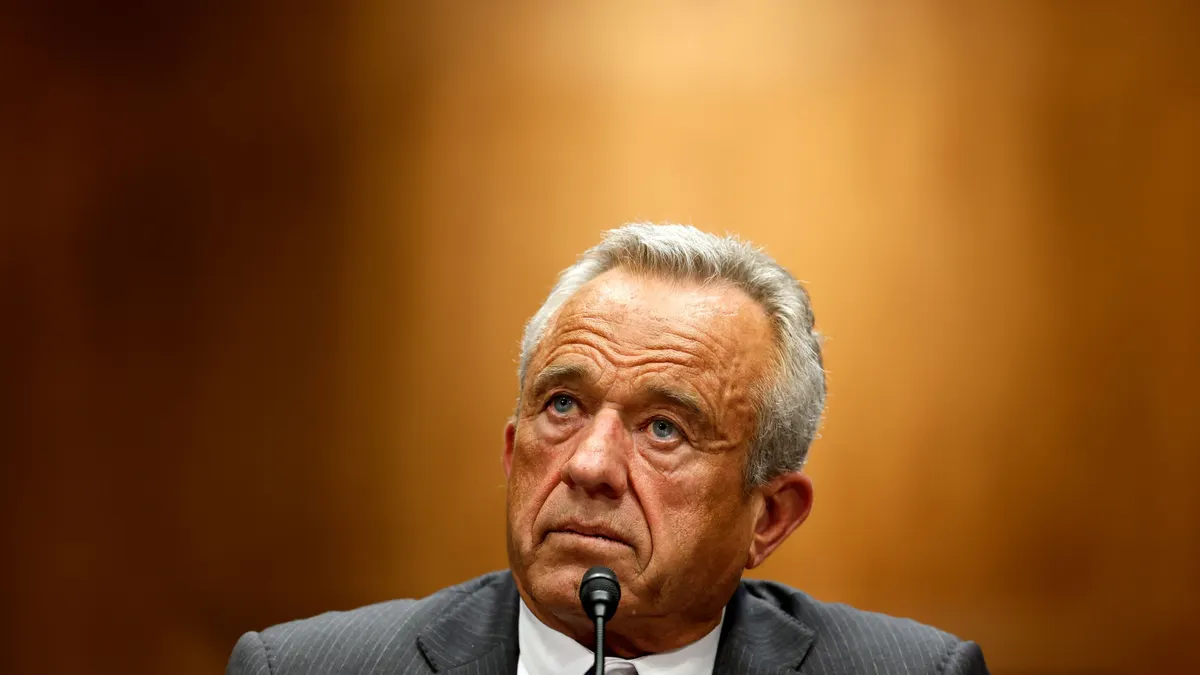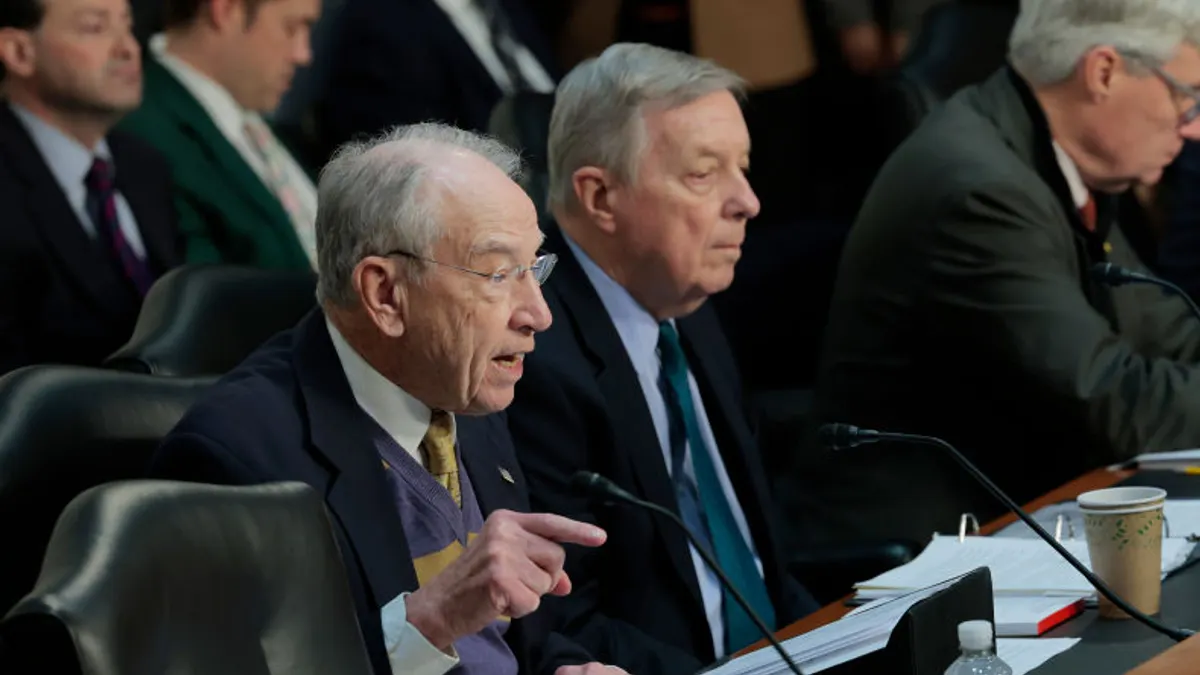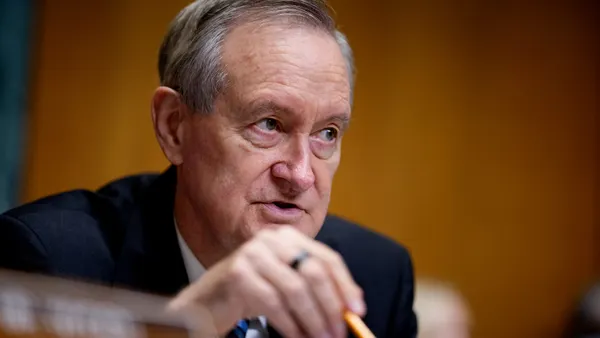CMS Administrator Dr. Mehmet Oz defended controversial policy decisions from Republicans in Washington during an appearance at a think tank Monday, arguing that cuts to the safety-net Medicaid program are not really cuts and stumping for a clean funding bill to reopen the government.
That’s despite looming premium pain for people on Affordable Care Act plans — a key sticking point fueling the funding impasse on Capitol Hill.
Oz also shared how his agency, which oversees federal health insurance programs for some 160 million Americans, is still focused on cracking down on overpayments to Medicare Advantage plans, despite a recent setback in the courts.
The former cardiothoracic surgeon and television personality also teased the incoming Medicaid director and weighed in on potential Medicare coverage of GLP-1s for weight loss.
Read more for the biggest takeaways from Oz’s appearance at the Aspen Institute in Washington, D.C.
-
Oz sides with Republicans in backing a clean funding bill without movement on ACA subsidies
The government shut down last week after Republicans and Democrats found themselves at loggerheads over the future of expanded subsidies for ACA plans, which made financial assistance available to more middle-income Americans and more generous for low-income enrollees.
The enhanced tax credits are set to expire at the end of 2025. Allowing them to lapse would have significant implications for the 24 million individuals who get coverage through the exchanges.
The expiration of the tax credits will cause premiums for ACA plans to more than double for subsidized enrollees, according to research firm KFF. Insurers think that will cause healthier members to drop coverage, leaving sicker and more expensive people remaining in the plans. An estimated 4 million people will lose health insurance if the subsidies expire.
Generally, Democrats support extending the credits. But Republicans are more wary, pointing to the steep cost to the federal government and fraud in the exchanges that they say stems from the lavish influx of taxpayer dollars.
Given the timing, legislators have backed themselves into a corner even if they elect to act. Rates are locked in for 2026, so a subsidy extension later in the year won’t prevent turbulence in the exchanges. Plans are already notifying their members of upcoming premium increases, and enrollees will see how drastically prices are rising across the board when the ACA “window shopping” period begins in mid-October.
So, even if Congress mitigates consumers’ out-of-pocket burden by extending the subsidies before January, a large swath of enrollees may have already dropped out of the exchanges.
Still, Oz said he backs a clean continuing resolution without movement on the subsidies. That’s in part because subject matter experts at the CMS, who would normally help shape policy action, are currently furloughed due to the shutdown, according to the administrator.
“Even if you wanted to do it now, you don’t want to make a decision of this importance in the middle of a shutdown when folks aren’t at work,” Oz said. “[That’s] why we need a clean continuing resolution to keep the government funded for the six weeks it might take to work through some of these issues.”
-
CMS is still bullish on Medicare Advantage audits
This spring, the CMS announced it would more aggressively audit MA plans to find and claw back overpayments. It’s a major issue: an influential congressional advisory group estimates that the CMS will pay MA insurers $84 billion more this year than the government would have if those members had been in traditional Medicare. Upcoding was responsible for almost half of those overpayments.
However, in September a federal judge threw out a Biden-era rule that would have underpinned the CMS’ plan. The CMS could appeal the judge’s decision, or reissue the rule following proper notice-and-comment procedures.
Oz suggested on Monday that regulators have not abandoned the effort.
“The RADV process, the audit process, has been held up. We think we can renavigate that. There are reasons why the courts felt the way they did,” Oz said.
The administrator said he is concerned that MA plans cost the federal government more than traditional Medicare, though he defended the program overall, citing the importance of choice for Americans and some evidence that MA plans provide higher quality care at a lower cost to enrollees.
Despite the CMS’ focus on clawing back overpayments, it doesn’t appear that the industry needs to gird itself for a full-tilt regulatory salvo. Oz said he’s met with the largest MA insurers and presented the importance of curbing upcoding, while asking what they would suggest.
That would suggest the administrator is pursuing voluntary reform, in line with a pledge to roll back prior authorization practices that the Trump administration secured from health insurers earlier this year.
“When the industry feels incredible pressure on them, and they know that, we have an opportunity to come down hard,” Oz said. “I think it’s worth a shot now.”
-
“No cut to Medicaid” in Big Beautiful Bill
The GOP’s sweeping tax and policy bill signed into law in July includes arguably the most significant overhaul of Medicaid in the program’s 60-year history. The legislation implements work requirements tying Medicaid eligibility to productivity, restricts a financing mechanism that increases federal Medicaid funding to states and hikes eligibility verification requirements, among other changes.
All told, the so-called “Big Beautiful Bill” will reduce federal Medicaid spending by almost $1 trillion over a decade, and increase the number of uninsured individuals by 10 million, according to the CBO. Some 7.5 million people will lose coverage due to changes to Medicaid alone.
The law is the largest rollback of federal support for healthcare in U.S. history, according to the Center for Medicare Advocacy.
But “there is no cut to Medicaid,” Oz said. “It’s not that we’re in any way cutting Medicaid.”
The Trump administration and Republicans on Capitol Hill have attempted to present the law as preserving Medicaid for the future by reorienting the program towards the most vulnerable Americans, a message that’s largely not landing with the American public. Recent polls show that the law is broadly unpopular.
Still, Oz pointed to the $50 billion allocated for rural health transformation in the legislation, which he said would reinvigorate healthcare in traditionally underfunded areas. (Providers have argued that fund is a drop in the bucket compared to how much they’ll lose from Medicaid cuts in the “Big Beautiful Bill.”)
Oz also said that the law’s controversial work requirement, which requires adult beneficiaries to log at least 80 hours of work, volunteering or education each month in order to qualify for Medicaid coverage, is a strategy to bolster US economy by getting more people to work — and work for longer.
“The beauty is we get people healthy so they can contribute to society. That’s the unbelievable return on investment,” Oz said, adding later: “As I look at the work requirement, it is part of this administration’s passionate desire to get people to believe they have agency over their future.”
But work requirements, which have been trialed in a small handful of states, have largely not achieved conservatives’ goals. Historically, work requirements have resulted in eligible individuals losing the safety-net coverage because of issues documenting their compliance, with no corresponding uptick in employment.
Research also shows that the vast majority of Medicaid beneficiaries already work or would qualify for some of the exemptions in the law.
-
CMS is developing a platform to help states manage Medicaid work requirements
The CMS is working on a platform to help states keep tabs on beneficiaries and ensure they’re meeting their quota for work requirements, Oz said. The goal is to make the software available to states as an option during the procurement process that they can compare and contrast with platforms from other vendors.
The CMS platform will be able to talk to other systems, like payroll software, to query Medicaid members’ work hours. It will be able to translate salaried employees’ data into hours as well, Oz said.
“Maybe, for example, we’ll divide the hours, the salary you have by $15 an hour, minimum wage, and we’ll just give you credit for that many hours,” Oz said.
States have been calling for more clarity from the CMS as they hustle to implement work requirements before the 2027 deadline. IT systems planning is a particular challenge, given many state Medicaid systems today are a patchwork of vendors and capabilities not designed to pull and track data from disparate sources — a capability at the core of tracking compliance with work mandates.
CMS has piloted its system in two states — Louisiana and Arizona — across roughly 25,000 patients. The process worked “fairly well,” Oz said. It took about seven minutes for users to fill out the necessary paperwork, and about 85% of users were satisfied, according to the administrator.
Though, “that’s not good enough,” Oz said. “You can’t have 15% of people lost from appropriate Medicaid coverage because it didn’t work. So we are working on making that better.”
The administrator said he also hopes the software will be able to connect beneficiaries with opportunities to help them meet the 80-hour threshold. For example, the platform could send an Uber driver who works 18 hours a week to the state’s employment agency website to see if they can find a couple more hours of work to reach the monthly quota, Oz said.
Oz also said he’s interested in creating a way for patients booted off of Medicaid to continue accessing drugs at the lowest possible price on the cash pay market.
-
Dan Brillman is set to be next Medicaid director
The CMS includes many subdivisions, including the Center for Medicaid and CHIP Services, which oversees the massive safety-net insurance program and its sister program for children. The Center for Medicaid and CHIP Services has been without an official director since June, when its previous leader, Drew Snyder, stepped down for personal reasons, according to media reports.
Oz hopes to replace Snyder with Dan Brillman, according to the administrator’s comments on Monday.
Brillman, a former combat pilot, is the co-founder and CEO of health tech company Unite Us. Unite Us provides software and data infrastructure for nonprofits, providers and health plans to connect patients to social services in 44 states.
“We’re desperately waiting for him to come in,” Oz said. “We’re just in a hiring process.”
Brillman has zero experience in state or federal government, a rarity for Medicaid directors, which usually hold leadership positions at state Medicaid programs before stepping up to federal service. It’s less out of the ordinary in the Trump administration, however, which has a history of tapping health tech executives to fill key leadership slots as it looks to weave more technology into government operations.
Medicare director Chris Klomp, for example, was the CEO of health IT company Collective Medical before it was acquired.
-
Oz did not shoot down Medicare coverage of GLP-1s for weight loss
On its way out the door, the Biden administration proposed a rule allowing Medicare to cover drugs for weight loss, a decision that would have sharply increased federal spending but opened the doors to Medicare coverage of popular and effective GLP-1s for patients with obesity.
The Trump administration elected not to finalize the rule, though regulators didn’t rule out eventually expanding coverage down the line.
Oz declined to answer whether he supported Medicare coverage of weight loss drugs directly. But “we’re in the middle of a lot of action in that space,” Oz said. “You’ll be hearing more about it very soon.”















